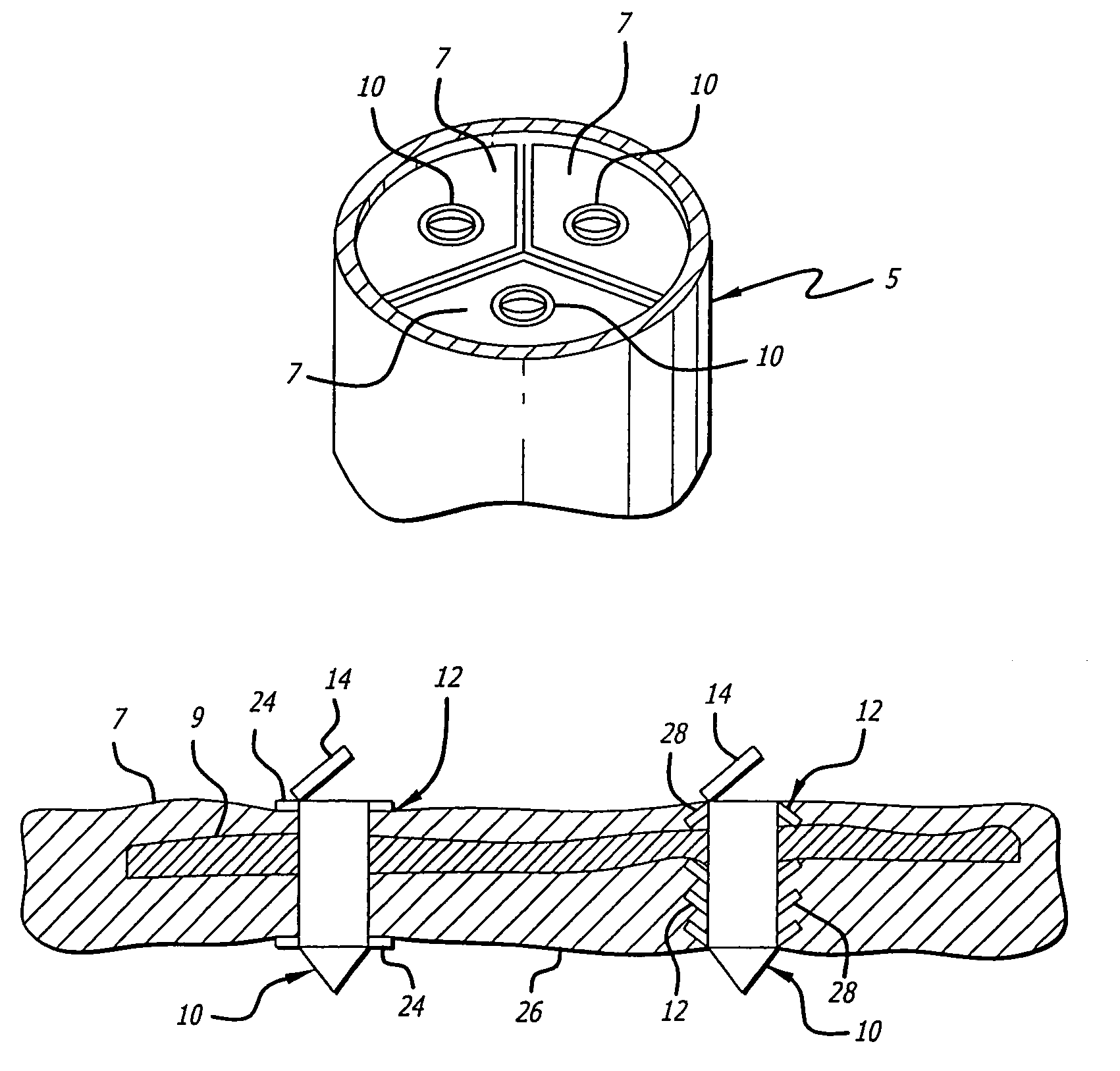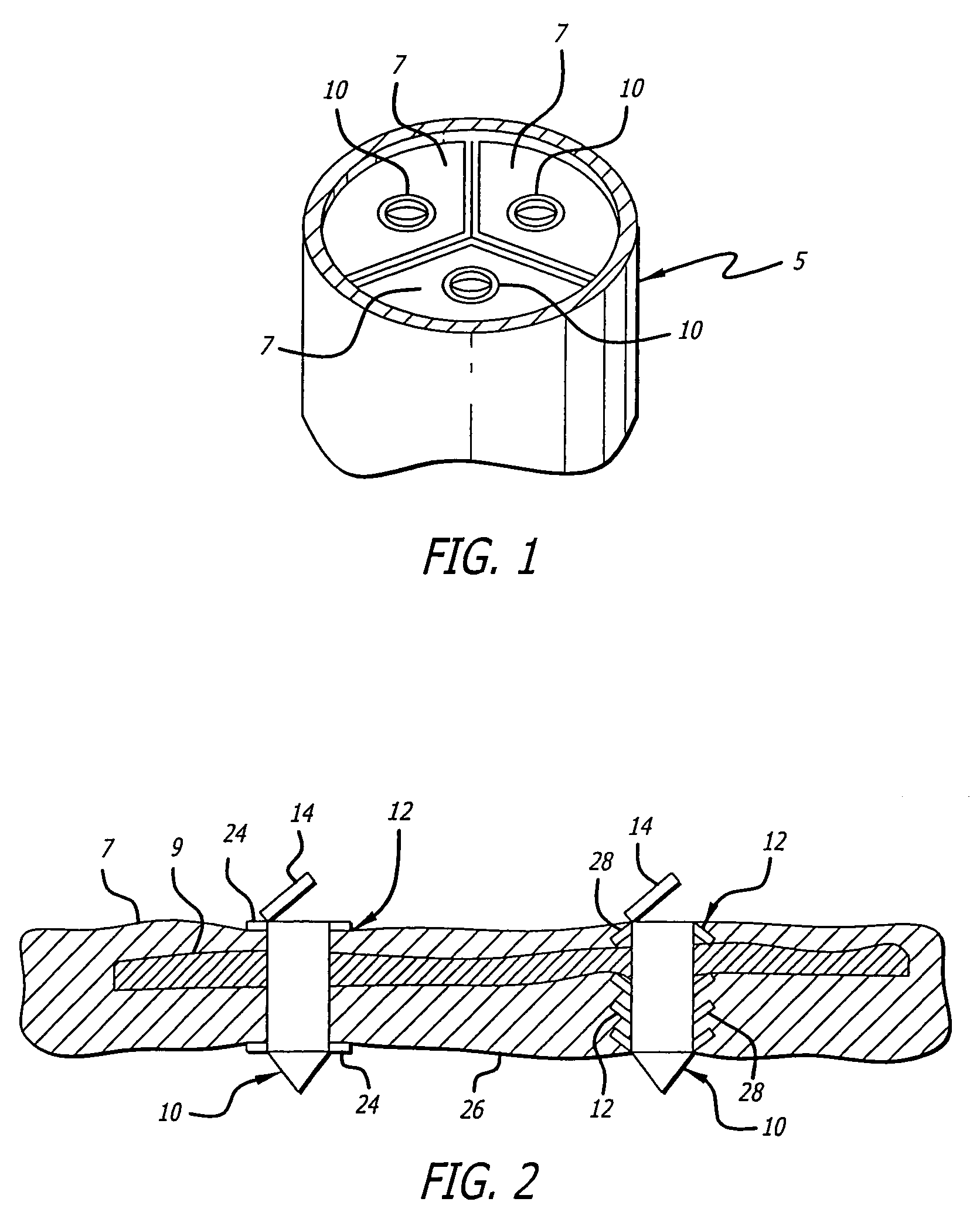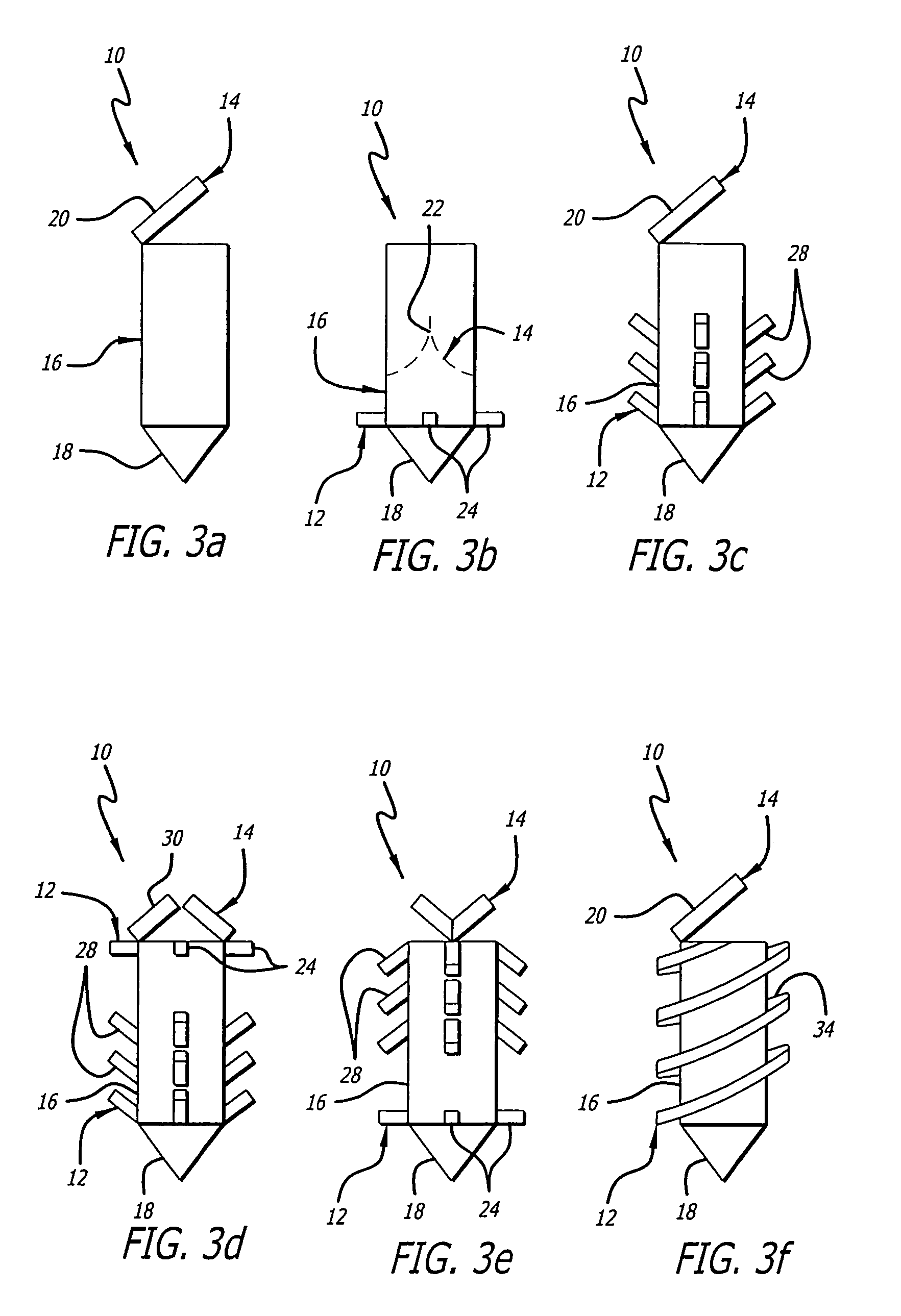Method of treating diseased valve
a diseased valve and valve leaflet technology, applied in the field of diseased valve treatment, can solve the problems of valve leaflet thickening, heart failure and death, and immobility or reduced mobility, and achieve the effects of reducing the risk of heart failure and death
- Summary
- Abstract
- Description
- Claims
- Application Information
AI Technical Summary
Benefits of technology
Problems solved by technology
Method used
Image
Examples
Embodiment Construction
[0054]Referring now to the FIGS., and first to FIG. 1, there is shown a native tricuspid valve 5 with a valve implant 10 of the present invention installed in each of the three leaflets 7 of the tricuspid valve 5. The valve implants 10 are shown in an open position to demonstrate that blood is allowed to flow through the valve implants 10, in one direction, even though the native tricuspid valve 5 remains closed. These valve implants 10 would similarly work with a native bicuspid valve, unicuspid valve or quadracuspid valve. Notably, each of the three leaflets shown in the tricusoid valve of FIG. 1 has a free edge that is coapting with the free edges of the other two leaflets. The valve implants 10 are implanted within the confines of each leaflet 7, spaced apart from the free edge, such that the free edge of each leaflet remains undisturbed in that the degree to which the free edge is continual with the free edges of the other leaflets remains essentially unchanged.
[0055]FIG. 2 dem...
PUM
 Login to View More
Login to View More Abstract
Description
Claims
Application Information
 Login to View More
Login to View More - R&D
- Intellectual Property
- Life Sciences
- Materials
- Tech Scout
- Unparalleled Data Quality
- Higher Quality Content
- 60% Fewer Hallucinations
Browse by: Latest US Patents, China's latest patents, Technical Efficacy Thesaurus, Application Domain, Technology Topic, Popular Technical Reports.
© 2025 PatSnap. All rights reserved.Legal|Privacy policy|Modern Slavery Act Transparency Statement|Sitemap|About US| Contact US: help@patsnap.com



